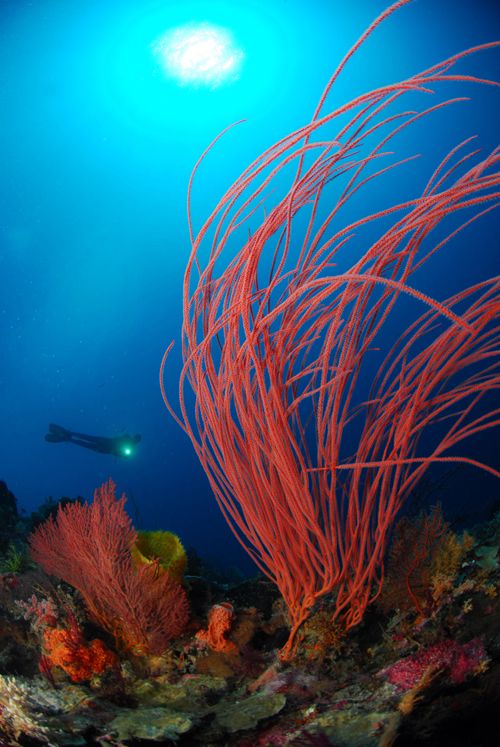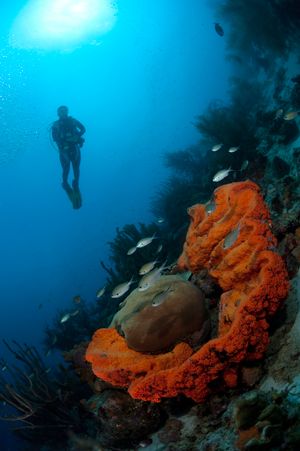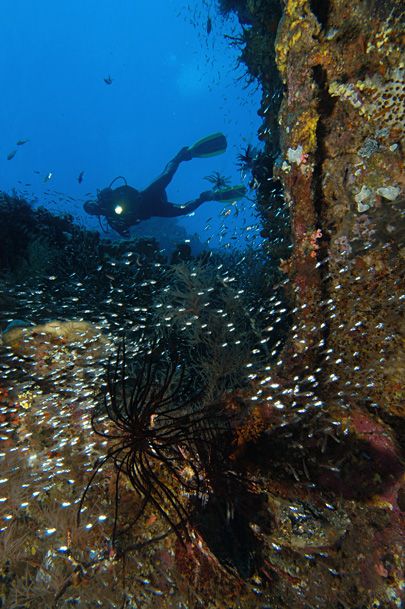Shooting Wide Angle Underwater Photography: Challenging and Rewarding
Shooting wide angle underwater photography can be both challenging and rewarding. It requires careful attention to both the foreground and background elements of the image to create a striking and cohesive composition. In this article, we will explore practical tips and techniques to help you improve your wide angle underwater photography skills or get you started on your underwater photography journey.
Tips for Getting Close
- One of the most important tips for shooting wide angle underwater photography is getting close to your subjects. To achieve this, it is recommended to use a wide lens, which allows you to capture more of the subject while limiting the amount of water between your camera and the subject. This proximity adds depth to the image and enhances the overall impact. Emphasize on getting close to your subject and creating intimate shots that capture their details.
Pre-Setting your Camera
- Before entering the water, it is essential to pre-set your camera according to the expected light conditions. However, underwater lighting can vary, so it is important to make adjustments as you descend. Take test shots of the blue water while adjusting your camera settings to ensure proper exposure. There is no one-size-fits-all camera setting, so it’s crucial to adapt to the specific lighting conditions. For a sunny day, start with an aperture set to f/8 or f/11 and a shutter speed of 1/125 or 1/160. This will give you a good starting point to capture well-exposed images.
Composition: Vertical and Horizontal Perspectives
- Experiment with shooting scenes both vertically and horizontally. Sometimes, the initial orientation you had in mind may not be the best option. Follow basic rules of composition, such as the rule of thirds, leading lines, and balanced framing. However, don’t be afraid to break the rules once you have a good grasp of composition techniques. Keep in mind that composition is key in creating compelling wide angle underwater images.
Creating Contrast for Impact
- To make your wide angle images visually striking, it’s important to create contrast. Shoot at an upward angle to capture your subject against a different colored background. This ensures that the foreground subject stands out and doesn’t merge into the background, resulting in cluttered and unappealing images. Experiment with different angles and perspectives to find the most impactful contrast in your compositions.
Mastering Lighting Techniques
- Mastering lighting is crucial for wide angle underwater photography. Start by shooting immobile objects such as corals and sponges to practice lighting techniques. To do this, turn off your strobes and create a proper exposure of the blue water background. Then, turn your strobes back on at a mid or low power setting, positioning them in the “standard” wide angle strobe position. Experiment with the amount of strobe power needed to properly expose and separate the foreground subject from the background. This technique ensures well-balanced lighting and a visually appealing image.
Experimenting with Strobe Positioning
- Don’t limit yourself to a single strobe position. Be adventurous and try different positions for your strobes, whether above or below the camera plane. If you’re using multiple strobes, experiment with variations of angles and combinations. Each strobe position creates a unique lighting effect, allowing you to add dimension and depth to your wide angle images.
Adding Compositional Elements
- Once you have mastered lighting techniques, it’s time to add additional compositional elements to your wide angle images. Consider incorporating divers into your shots to add perspective and scale to the scene. Play around with the positioning of your subjects against negative space in the frame, as this can have a significant impact on the final image. Experimentation with compositional elements allows you to create visually captivating wide angle compositions.
Training Your Eye for Unique Opportunities
- Train your eyes to spot good wide angle foreground subjects that can either contrast with open water or have background elements that enhance the overall composition in a unique way. The more you practice and review your results, the better you become at identifying opportunities that make great wide angle images. Cultivate your observational skills to capture exceptional moments and compositions underwater.
Additional Composition Ideas to Try
- Take your wide angle underwater photography to the next level by experimenting with additional composition techniques:
- Silhouetting your subject against the background is a simple yet impactful technique. Practice getting a good exposure of the blue water and capture the subject’s outline against the contrasting background. This technique does not require a strobe and provides an excellent opportunity to work on exposure and composition skills.
- Create a “forced perspective” effect by getting as close as possible to your subject and using wide angle lens distortion to make it appear larger than reality. This optical illusion can result in unique and visually stunning wide angle images that captivate viewers.
- Try shooting split shots or “over-unders” that capture both the underwater and above-water worlds. This technique requires a large dome port to break the water line plane. It’s crucial to adjust exposure settings to compensate for the difference in ambient light above and below the water. While challenging, mastering the art of split shots can yield incredible results and allow you to showcase the beauty of the underwater environment in a unique way.
Exploring Shipwrecks as Unique Subjects
- Shipwrecks provide a captivating and mysterious context within the underwater environment. They offer a range of unique opportunities for wide angle photography. Exploring and photographing shipwrecks requires careful planning, lighting techniques, and composition skills. Dive into our comprehensive guide on photographing shipwrecks by legendary underwater photographer David Doubilet to learn more about capturing stunning images in this exciting subject matter.
Chasing the Ultra-Wide Panoramic Shot
- One of the most challenging shots to strive for in wide angle underwater photography is the ultra-wide panoramic. This shot requires shooting in shallow water with ample ambient light while using strobes as fill light to emphasize details. You can create an ultra-wide image and crop it to a panoramic dimension or shoot multiple exposures at the same settings while carefully moving parallel to the reef. These images can then be stitched together in post-processing to create a seamless panoramic view. Achieving rich colors and detail in this type of shot is the ultimate goal for adventurous photographers.
So what are you waiting for? Dive into the world of wide angle underwater photography and unlock a whole new level of creativity and exploration. Follow these tips and techniques, practice, and allow your passion for photography to blossom beneath the waves. Get out there and go wide!
Return back to the Techniques Section
RELATED CONTENT
- Join the discussion on Facebook Comments
- Share your thoughts and experiences in the Comments section
- Subscribe to our Newsletter for more underwater photography tips and inspiration
Featured Photographer
Discover the works of our featured photographer who has mastered the art of wide angle underwater photography and find inspiration for your own underwater adventures.
The article is compiled and compiled by tipcamera.com







